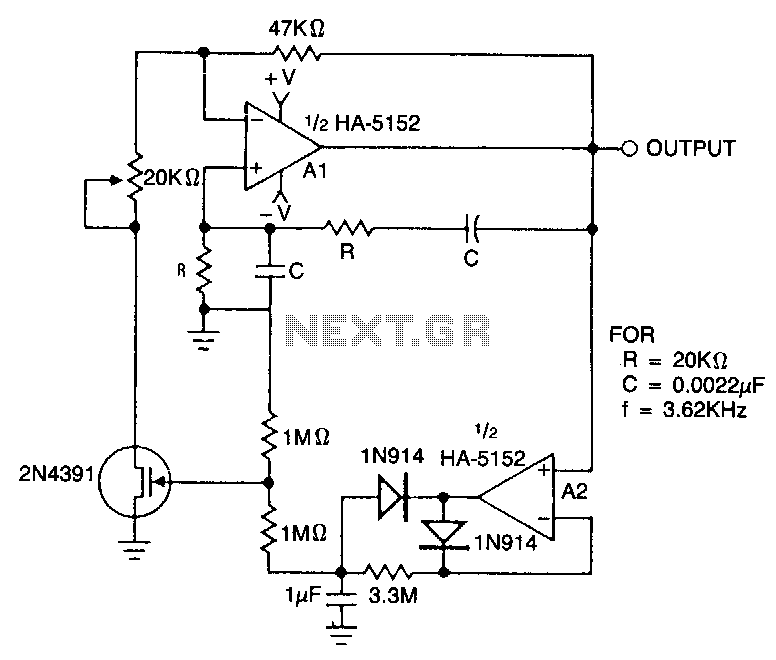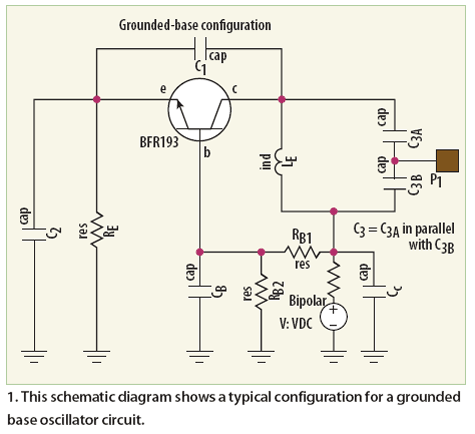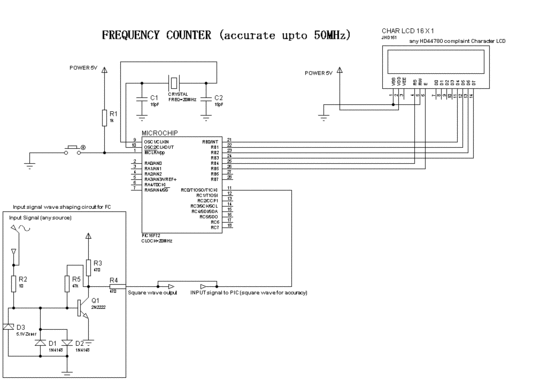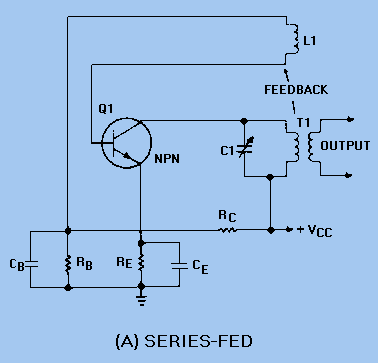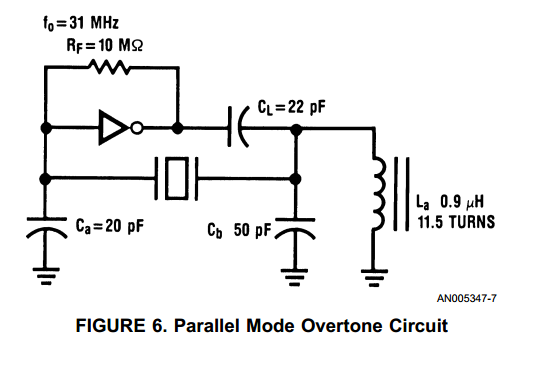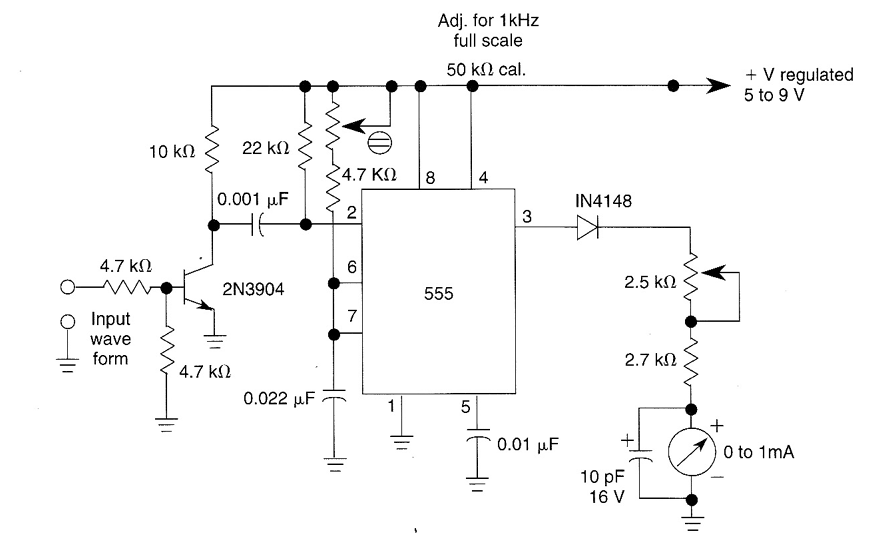
Wide frequency oscillator
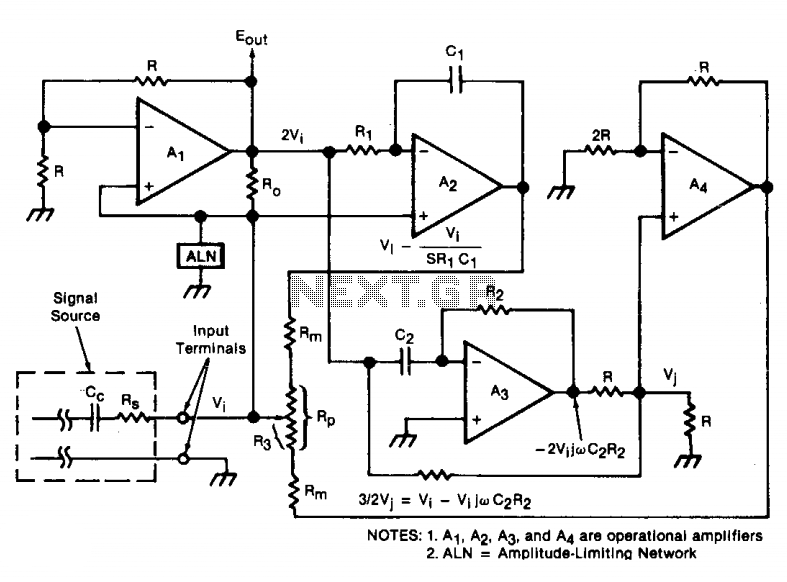
An oscillator/amplifier is resistively tunable over a wide frequency range. Feedback circuits containing operational amplifiers, resistors, and capacitors synthesize the electrical effects of inductance and capacitance in parallel between the input terminals. The synthetic inductance and capacitance, and therefore the resonant frequency of the input admittance, are adjusted by changing a potentiometer setting. The input signal is introduced in parallel to the noninverting input terminals of operational amplifiers A1 and A2 and to the potentiometer cursor. The voltages produced by the feedback circuits in response to the input voltage V are indicated at various circuit nodes.
The described oscillator/amplifier circuit employs a configuration that enables the adjustment of its resonant frequency through resistive tuning. This is achieved using a feedback network that integrates operational amplifiers, resistors, and capacitors to mimic the behavior of inductors and capacitors, effectively creating a synthetic LC circuit.
In this setup, the operational amplifiers A1 and A2 serve as the core active elements, amplifying the input signal while maintaining stability across the desired frequency range. The feedback loops are critical for determining the gain and frequency response of the circuit, allowing for fine-tuning of the output characteristics.
The potentiometer plays a vital role in this configuration, as it allows for the adjustment of the synthetic inductance and capacitance by varying its resistance. This adjustment alters the resonant frequency, which is the frequency at which the circuit exhibits maximum response. The input signal is connected to the noninverting terminals of A1 and A2, ensuring that the amplification process is responsive to changes in the input voltage.
The feedback network's output voltages, which are a function of the input voltage V, can be monitored at various nodes throughout the circuit. These voltages provide insight into the circuit's performance and can be used for further analysis or modifications. This design offers versatility and precision in applications requiring a tunable oscillator or amplifier, making it suitable for a wide range of electronic applications.An oscillator/amplifier is resistively tunable over a wide frequency range. Feedback circuits containing operational amplifiers, resistors, and capacitors synthesize the electrical effects of an inductance and capacitance in parallel between the input terminals. The synthetic inductance and capacitance, and, therefore, the resonant frequency of the input admittance, are adjusted by changing a potentiometer setting.
The input signal is introduced in parallel to the noninverting input terminals of operational amplifiers Aj and A2 and to the potentiometer cursor. The voltages produced by the feedback circuits in response to input voltage V^ are indicated at the various circuit nodes.
🔗 External reference
The described oscillator/amplifier circuit employs a configuration that enables the adjustment of its resonant frequency through resistive tuning. This is achieved using a feedback network that integrates operational amplifiers, resistors, and capacitors to mimic the behavior of inductors and capacitors, effectively creating a synthetic LC circuit.
In this setup, the operational amplifiers A1 and A2 serve as the core active elements, amplifying the input signal while maintaining stability across the desired frequency range. The feedback loops are critical for determining the gain and frequency response of the circuit, allowing for fine-tuning of the output characteristics.
The potentiometer plays a vital role in this configuration, as it allows for the adjustment of the synthetic inductance and capacitance by varying its resistance. This adjustment alters the resonant frequency, which is the frequency at which the circuit exhibits maximum response. The input signal is connected to the noninverting terminals of A1 and A2, ensuring that the amplification process is responsive to changes in the input voltage.
The feedback network's output voltages, which are a function of the input voltage V, can be monitored at various nodes throughout the circuit. These voltages provide insight into the circuit's performance and can be used for further analysis or modifications. This design offers versatility and precision in applications requiring a tunable oscillator or amplifier, making it suitable for a wide range of electronic applications.An oscillator/amplifier is resistively tunable over a wide frequency range. Feedback circuits containing operational amplifiers, resistors, and capacitors synthesize the electrical effects of an inductance and capacitance in parallel between the input terminals. The synthetic inductance and capacitance, and, therefore, the resonant frequency of the input admittance, are adjusted by changing a potentiometer setting.
The input signal is introduced in parallel to the noninverting input terminals of operational amplifiers Aj and A2 and to the potentiometer cursor. The voltages produced by the feedback circuits in response to input voltage V^ are indicated at the various circuit nodes.
🔗 External reference
